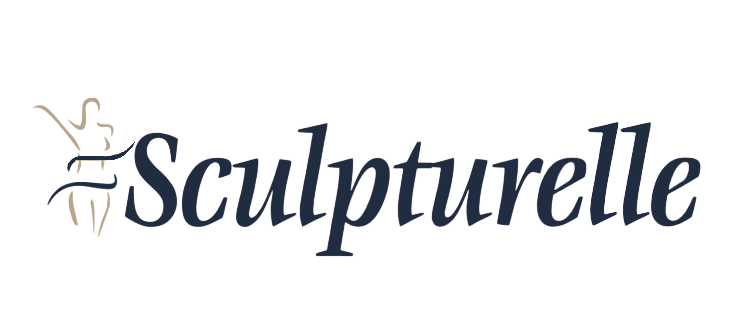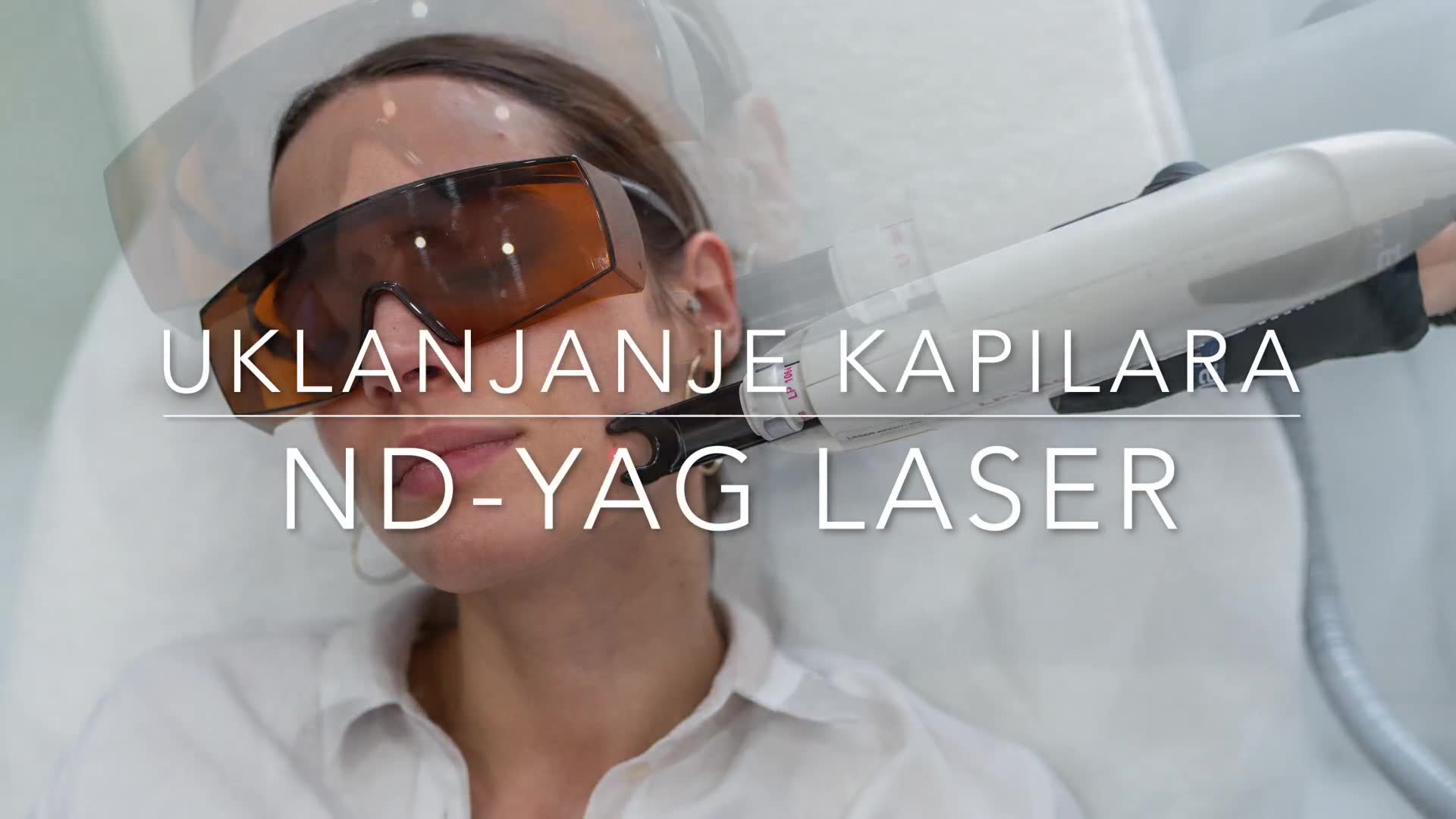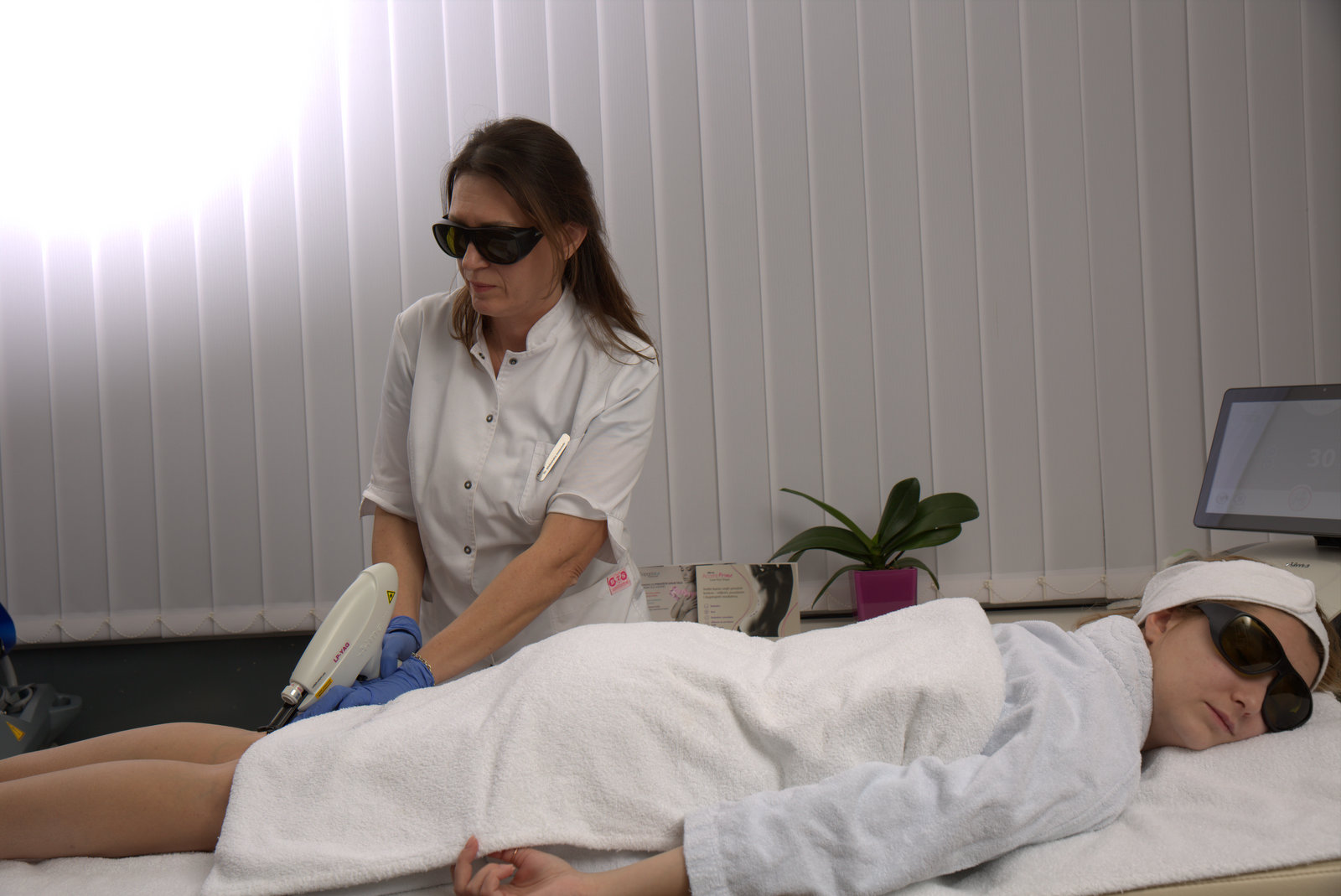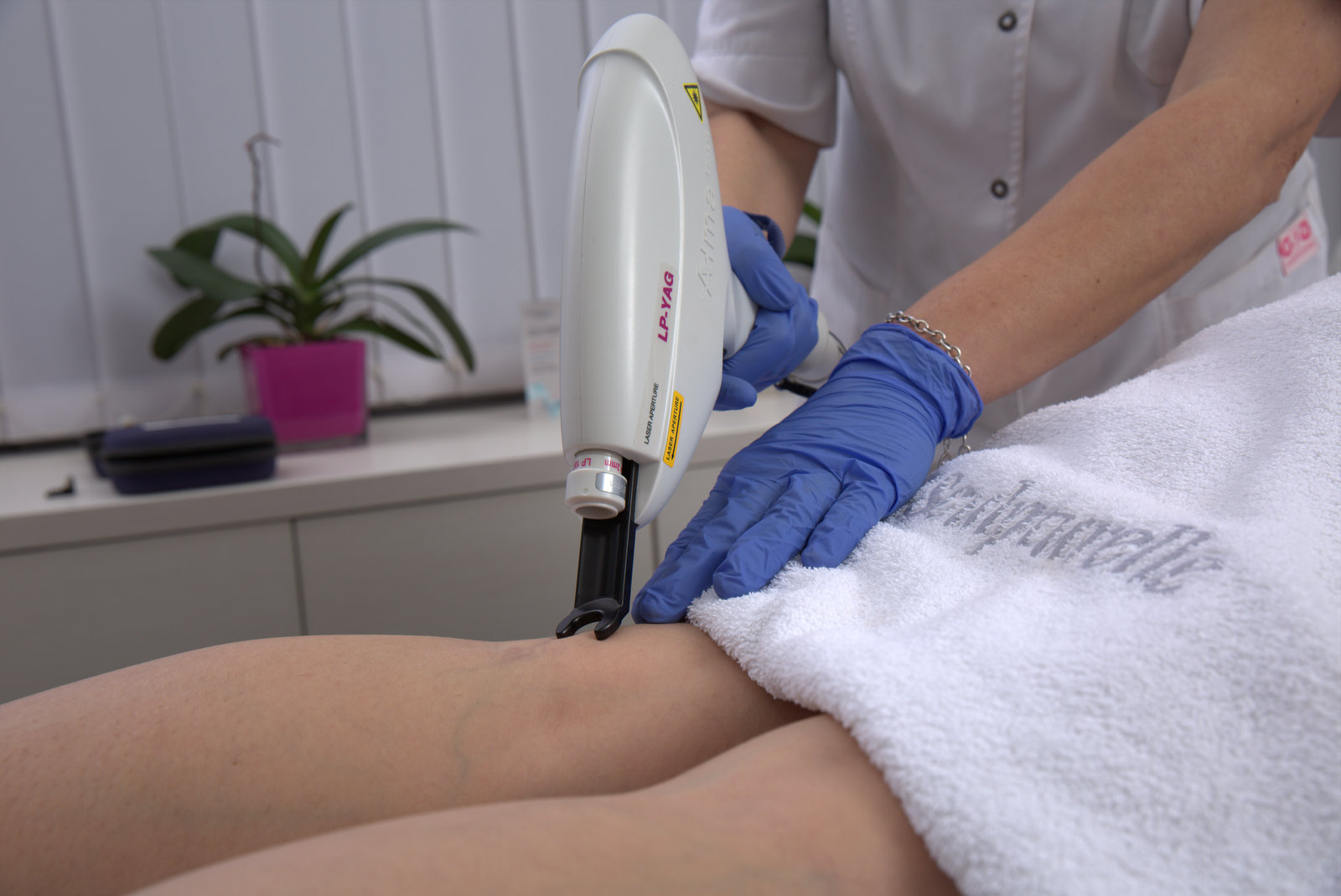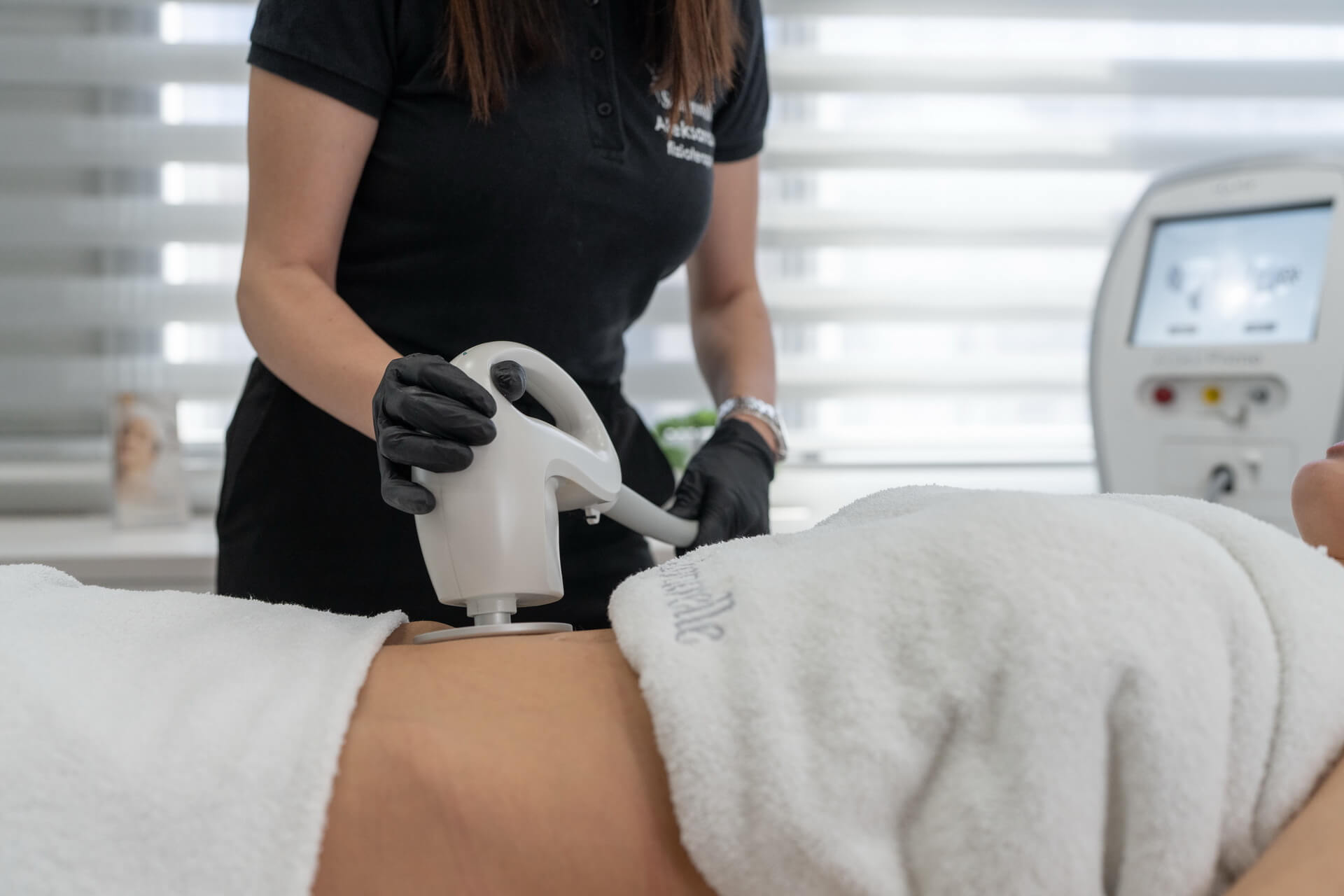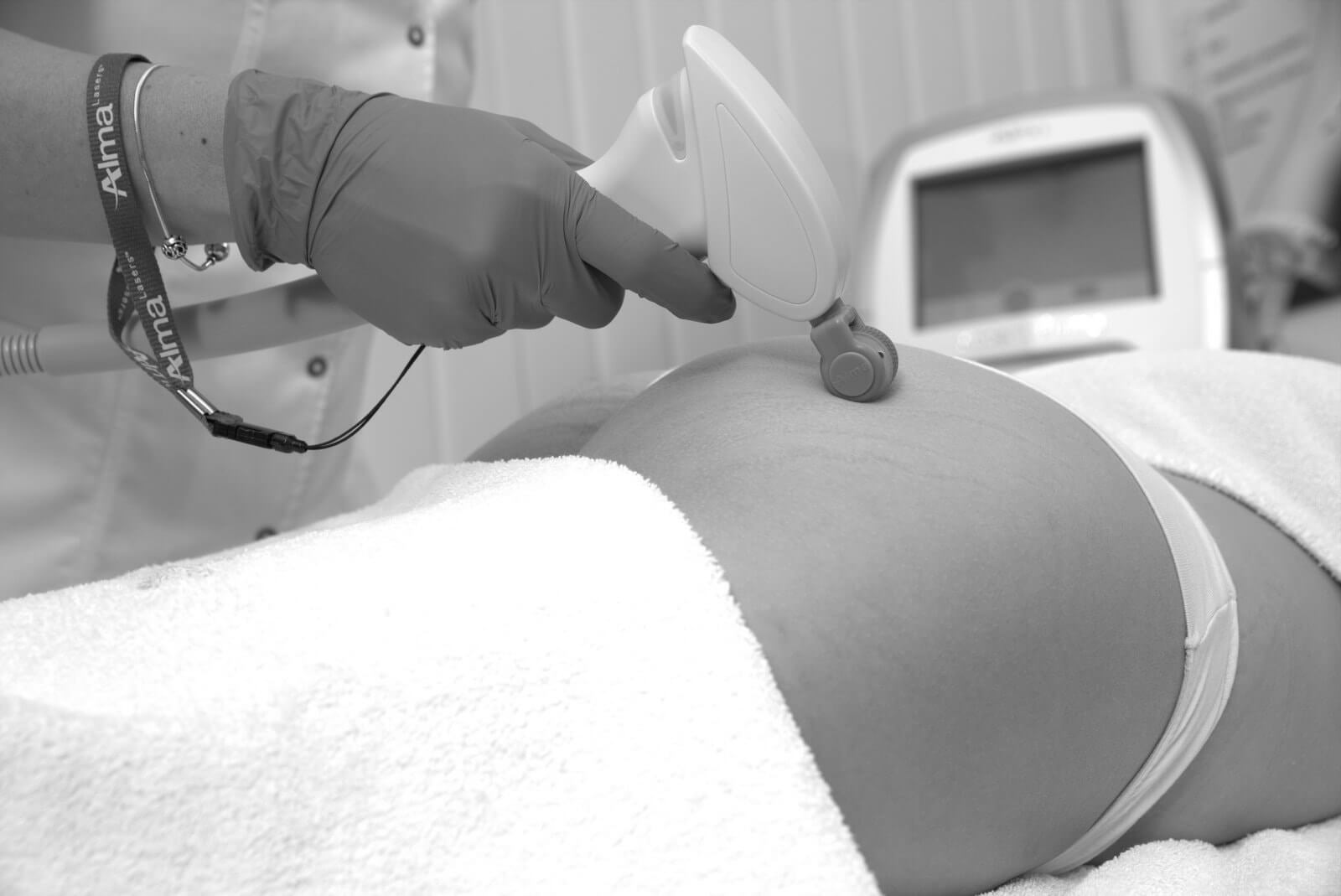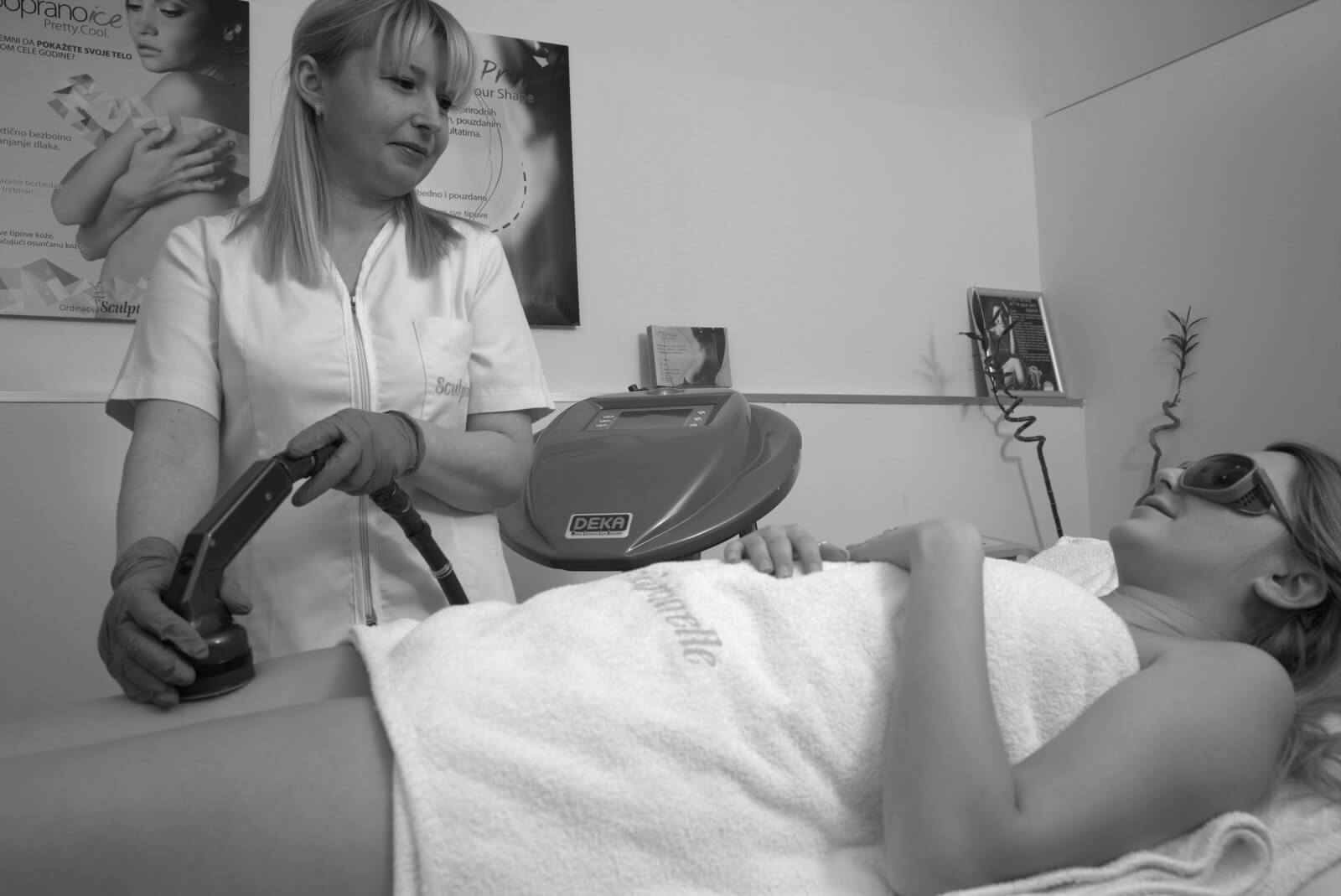Enlarged capillaries are permanently enlarge tiny blood vessels in superficial layers of the skin. Given the fact that they are extremely gentle, countless harmful factors can cause them to expand or burst. Laser capillary removal is the most modern method for solving this issue.
Traditional methods for enlarged capillaries removal are radio wave electrocoagulation or medical sclerosis. What these method lacks is minimal damage to the skins’ integrity, possible changes and a possibility of an allergic reaction to the sclerosing substance. State of the art method of laser capillary removal are laser with wave length 1064nm, so called Nd:Yag lasers.

